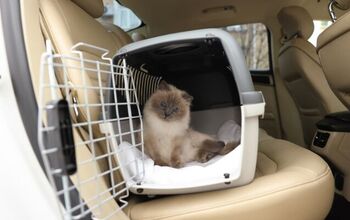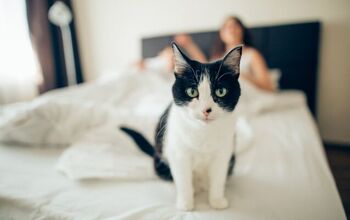Palomino Rabbit


About Palomino Rabbit
Mark Youngs of the Lone Pine Rabbitry in Washington state had raised rabbits for many years and wanted to develop a new breed. He crossed several commercial-typed rabbits in the late 1940s and eventually made way for a rabbit he called “Tawnies.” He enlisted the help of a few other breeders and together, they developed their brightly colored tawnies into a new breed and obtained an American Rabbit Breeder’s Association’s (ARBA) working standard under the name “Washingtonian.” The new rabbit breed was presented in an ARBA convention in 1953, where the name was changed to Palomino and in 1957, the Palomino Rabbit was officially recognized by the ARBA.
The Palomino rabbit needs plenty of time outside of its enclosure to explore and thrive.
The Palomino rabbit weighs anywhere from 8-10 lbs once fully grown and has a commercial style body type. It has a well-rounded hind quarters, firm flesh, have large, upright ears and brown eyes.
This rabbit has coarse, short to medium rollback fur which does not require much maintenance in order to keep it show-worthy. During off-seasons shedding times, bi-weekly grooming sessions are perfectly acceptable. During the spring, owners may want to increase the number of brushings depending on how much the rabbit’s shed. Once to twice per week should be plenty during these molting periods.
The only two colors accepted by the ARBA is lynx, the latter being the most popular. The golden color is an orange/beige cream color with white undercoat while the lynx variety has a silver or gray surface color blending to a beige/orange or white/cream coat.
The Palomino rabbit makes a wonderful first-time pet.
In order to see its personality blossom, the Palomino rabbit needs plenty of time outside of its enclosure to explore and form a lasting bond with its human family. This particular breed does well either in indoor or outdoor enclosures, as its coat is dense and coarse enough to handle cold temperatures (even with snow), so long as its outdoor enclosure is protected from the elements (sun, rain, snow). Outdoor enclosures should also be covered on three sides to protect rabbits from cold drafts in the winter, as well as provide ventilation and shade at the same time during the hotter months. Indoor enclosures should be made of wire and have a solid bottom in order to lay down rabbit-safe bedding (horse bedding is acceptable as well). Bedding should be spot-cleaned everyday to keep it sanitary and needs to be completely replaced at the end of every week.
As with any rabbit, the Palomino’s consists of 70 percent high-quality hay (such as orchard hay), with the rest being a healthy mixture of leafy greens, pellets, fruits and vegetables. Adult rabbits can eat about 1/4 cup of high-fiber pellets everyday for every 5 lbs. it weighs. Always make sure to research what kind of fruit/leafy green/vegetable you’re planning on feeding them, as some are not recommended for rabbits and others contain high levels of sugar and are better left as treats.
Due to the Palomino’s short, coarse coat, it is not at-risk for digestive issues such as woodblock. It is still susceptible to other problems such as overgrown teeth, flystrike and ear mites. Owners need to check the Palomino rabbit ears every 2-3 weeks for the latter and if your rabbit’s diet does not consist mainly of hay, it may develop overgrown teeth. This will affect if/how much they eat, as its constantly growing teeth can grow into its jaw, and be painful. This can be corrected with a quick trip to your vet at first, and then switch to a diet that is higher in hay, as it naturally grinds down your rabbit’s teeth.
Female rabbits (called does) can be spayed when they are as young as four months old, however vets tend to wait until they are six months old. Male rabbits (called bucks) are eligible to be neutered as young as three and a half months old. All rabbits should also be given worm prevention treatment and checked for ticks and fleas regularly.
The Palomino Rabbit has coarse, short to medium rollback fur, which does not require much maintenance.
Palominos love to be out of its enclosure and into the world. Due to its gentle nature, it does well with children so long as it is handled carefully and has enough time out of its enclosure to become social animals. If it spends too much time in its enclosure, it will become depressed and/or bored, especially if it has no companion rabbit. The Palomino Rabbit is a wonderful first-time pet, as it is relatively low maintenance so long as you provide it with essential items to keep it safe, healthy and happy. Because it is a sociable animal, these rabbits are also good pets for couples and seniors, so long as retirees are able to physically to tend to the rabbit’s needs.
Rabbits are harder to litter train than other animals, however it is possible with lots of patience, perseverance and plenty of treats. Many rabbit owners will have 5 or 6 litter boxes scattered across their home so their rabbit can easily access do the deed wherever it pleases. Having said that, don’t be alarmed if potty training your rabbit takes a few months… it may be a lengthy process, but it’s well worth the end result.
Be sure to provide your Palomino rabbit with a few bunny-safe toys. Rabbits have different personalities and can be picky with its toys. Some rabbits are content with just some cardboard or a discarded piece of wood while others require elaborate toys that mentally stimulate. It’s your responsibility to make sure your pets are healthy and happy – you’ll just have to figure out what kind of toy your rabbit prefers!
Photo credit: dalino123/Flickr; Ứng Dụng Miễn Phí/Flickr; Hillbillygoatgirl/Flickr

More by Diana Faria

























